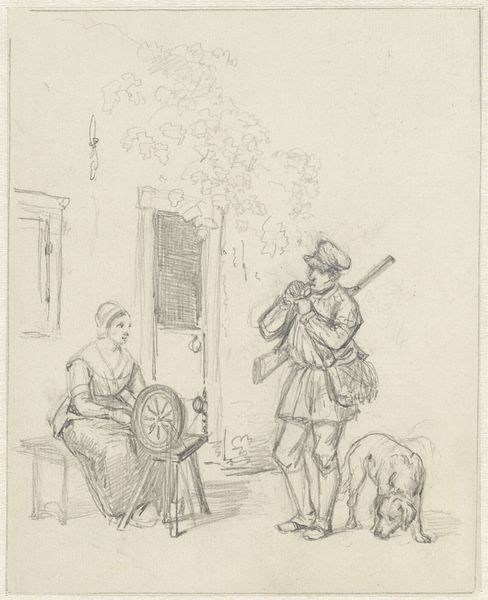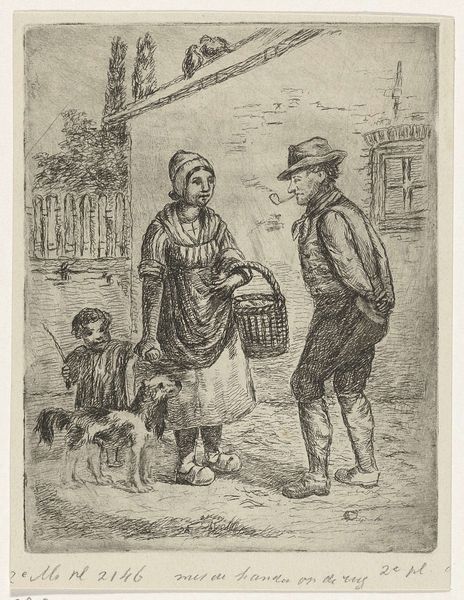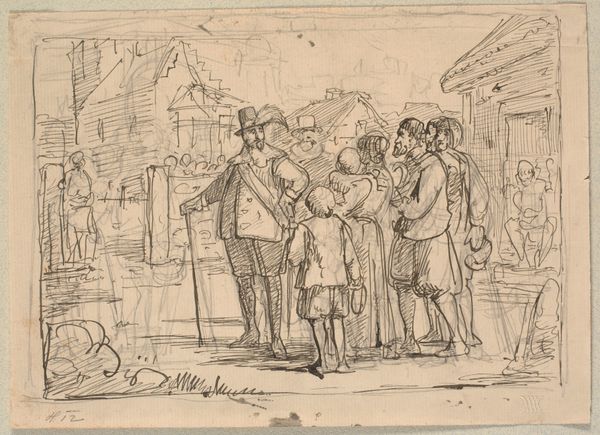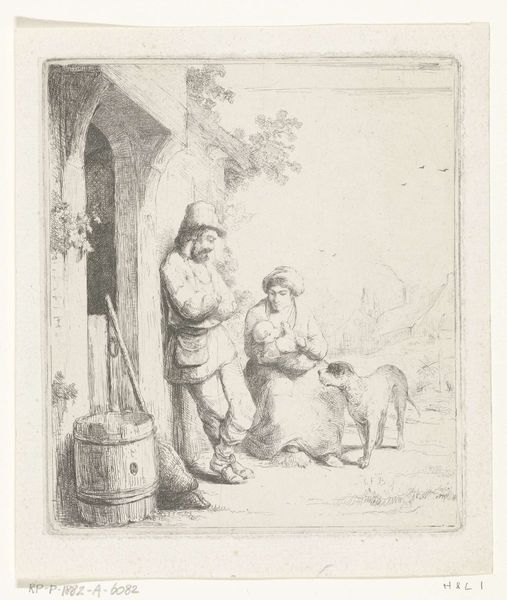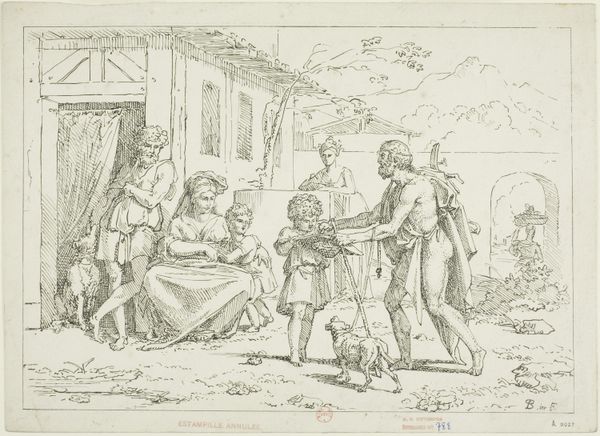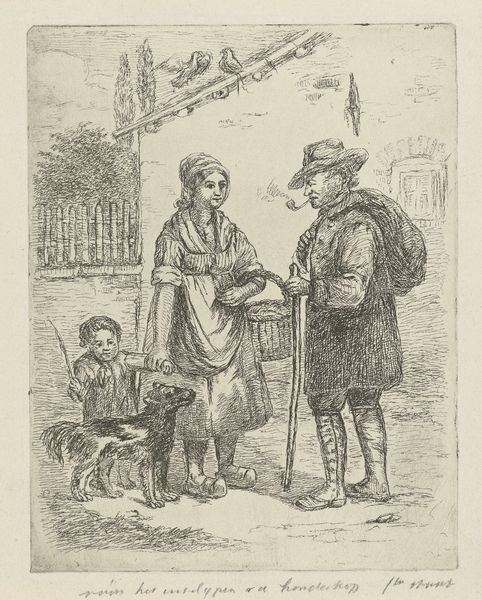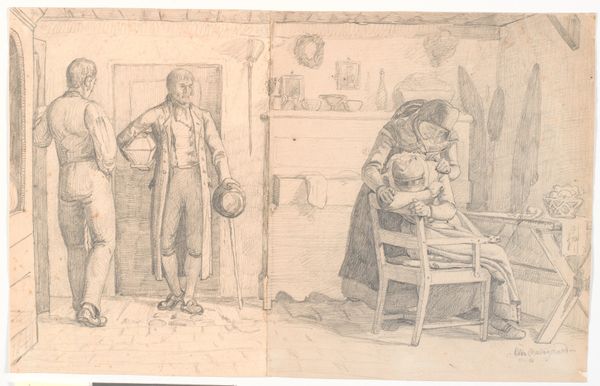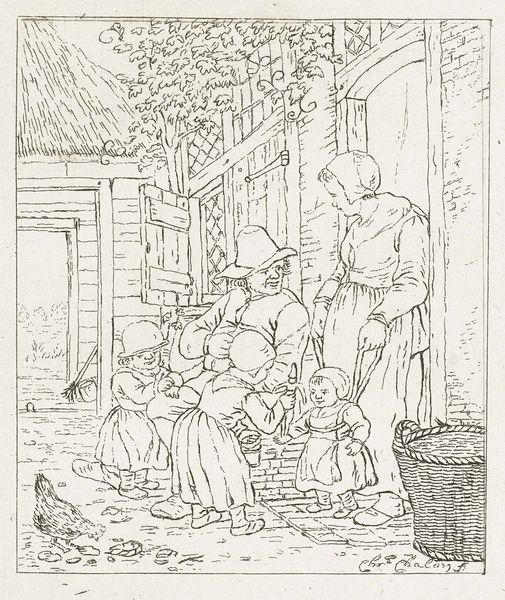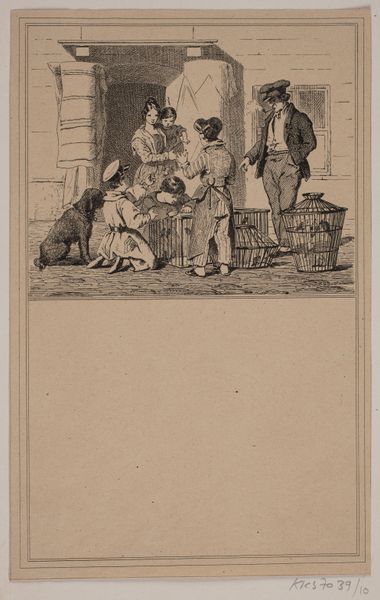
drawing, pencil
#
drawing
#
quirky sketch
#
pen sketch
#
pencil sketch
#
landscape
#
figuration
#
personal sketchbook
#
sketchwork
#
pen-ink sketch
#
pencil
#
sketchbook drawing
#
genre-painting
#
storyboard and sketchbook work
#
fantasy sketch
#
realism
#
initial sketch
Dimensions: height 173 mm, width 138 mm
Copyright: Rijks Museum: Open Domain
Curator: Let's take a moment to observe "De vrouw bij het spinnewiel," or "Woman at the Spinning Wheel," a drawing by Christiaan Wilhelmus Moorrees, likely created sometime between 1811 and 1867. Editor: My immediate impression is of a captured, quiet moment. There is such detailed focus given the limited strokes available from this medium. The subjects feel very stoic. Curator: Indeed, observe the structural integrity achieved with minimal tonal variation. Moorrees masterfully uses line weight to define form and space, particularly around the contours of the figures and architecture. Consider the strategic placement of the characters within the frame. The positioning seems almost staged, presenting two disparate modes of existence side by side. Editor: Exactly! The iconography is potent. The woman at her spinning wheel, a symbol of domesticity and quiet labor, juxtaposed against the hunter, rifle slung over his shoulder, ready for action and venturing outdoors with his dog. This imagery embodies societal roles and expectations. What is interesting here is how, together, they represent the push and pull of everyday existence and survival, almost creating a tableau of human reliance on nature and resourcefulness. Curator: It’s fascinating how Moorrees encapsulates this interplay through precise and economical lines. Notice how the roof of the building subtly dominates the upper portion of the scene, providing weight and tension that reinforces its status. We understand implicitly the function and purpose of the place. Editor: Absolutely, and that detail provides narrative cues, which is fascinating given it is such an initial sketch. I imagine in that era people immediately interpreted its subtle symbolic order that dictated their place in life. This speaks volumes about how artists reflected their world, capturing its material, intellectual, and spiritual essences through symbolism that still resonates, although differently, today. Curator: A pertinent reminder to examine the artist’s role not merely as an observer, but also as an interpreter of the symbolic framework structuring our human interactions. The image embodies elements that were very essential in that era. Editor: Precisely, this exploration reinforces the significance of these subtle arrangements within the artistic composition that provide an understanding of past realities and reflect on them today.
Comments
No comments
Be the first to comment and join the conversation on the ultimate creative platform.
